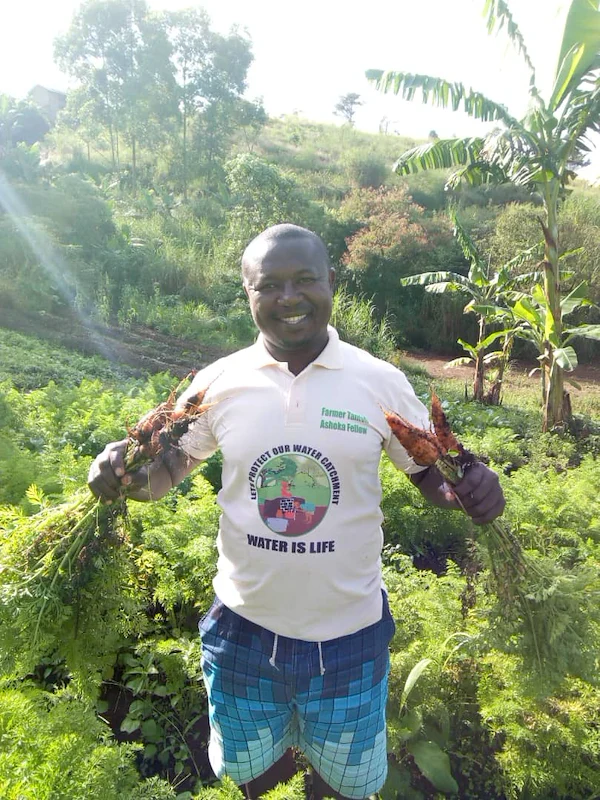.jpg?sfvrsn=ec22434_1)
9186e322-f82f-48d4-9cfc-7ed9a69abf6c.jpg?sfvrsn=dc3a465a_1)
ed247c52-6a34-4b71-b88b-9350e98a3872.jpg?sfvrsn=23005235_1)
One of the experiences that moved me in the mountains was when I visited the Fulani pastoralists – commonly known as the 'Mbororos' – who live an isolated lifestyle in the mountains of Cameroon with their cattle. They did not have access to portable water despite the numerous springs found in the mountains. They drank from the same water sources as their cattle and often contracted water-borne diseases, especially typhoid, because of it. This moved me to start a programme to empower them on catchment conservation and clean water.
A water catchment is a topographically defined area that is drained by underground spring sources. Many water catchment areas where these springs emerge are gradually disappearing. Water catchment conservation therefore is the protection of these spring sources through the planting of trees, grasses and shrubs to preserve the spring sources. It also entails building fencing to prevent illegal trespassing of people and animals.

My work does not stop there. I am also establishing an eco-village in Bamenda called Farmer Tantoh’s Ecovillage and SYFA Resource Center to preserve the cultural heritage of the Bamenda Grassfields and attract city dwellers, international eco-tourists and volunteers. In the near future, I will be working on establishing a raffia bamboo nursery. I also aim to introduce low-cost solar energy to the communities living in the mountain areas of the northwest region, especially in the Fulani communities and other grassfield groups that do not have access to electricity.
The Save Your Future Organization has been able to build and consult on the construction of more than 60 water tanks and wells that are providing clean water to more than 50 000 people. We have also established more than 800 gardens across the northwest region. I work with a team of six people and have trained more than 300 volunteers. Because of our projects, a group of American authors were inspired to write and illustrate my story in a children’s book, titled I Am Farmer: Growing an Environmental Movement in Cameroon. The book is being used for elementary schools across the United States of America and has also been translated into French (Tantoh Le Fermier) to introduce the book in Francophone African countries and Haiti. I plan to introduce my story to all schools in the Western Highlands so that children can be inspired.
What I would like for the world to know is, there are hundreds of grassroots initiatives hidden in rural communities around the world, most of them led by individuals like me, that are doing a lot of activities on sustainable mountain development. It can be difficult, however, for these initiatives to gain access to resources. With the proper facilities – such as transportation means, cameras and volunteers to join us – we could better access mountains communities and document our initiatives to show the world what grassroots people are doing to preserve mountains. This would inspire other mountain communities to take action.